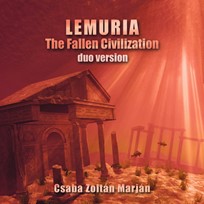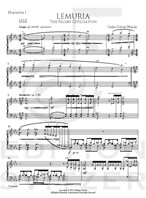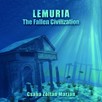
Lemuria - The Fallen Civilization (Duo Version)
Composer: Csaba Zoltán Marján
Instrument: Marimba Duo
Level: Advanced
Published: 2011
Price: €25.00
Item details
-
Description +
-
Duration: 8 min.
The term Lemuria as the name of a hypothetical lost land has been used since the 19th century. Scientists came up with a theory of a sunk continent in order to explain the unusual distribution of various animals and plants around the Indian and Pacific Oceans. This concept has been rendered obsolete by modern theories of plate tectonics, however, the hypothesis did not disappear completely. The theme of the lost continent has been adopted by a number of writers involved in the occult, and had inspired several films and music as well. Accounts of Lemuria differ, but all share the common belief that a continent existed long time ago but submerged beneath the ocean as a result of a geological change. According to certain beliefs a „highly evolved” civilization may have flourished on this land greatly affecting the development of later cultures.
The musical ideas of this piece, which intends to show the dissolution of this world including its entire civilization, are based on its solo version. Although this duo went through some structural changes, the hectic and energetic character is still present. The frequent dynamic differences and tempo changes make the constant pulsation of sixteenth notes colourful, however, this is interrupted by a few melodic and tranquil sections where the musical skills of the performers can be expressed.
It is written for a five-octave and a low „f” marimba. There is also an alternative version which gives the possibility to perform this piece for a five-octave and an „a” marimba.
Lemruria is written for Maria Finkelmeier and Jacob Remington
-
-
Instrumentation +
-
Two Marimbas
-
-
Watch+
-
About the composer +
-
Csaba Zoltán Marján was born in Nyíregyháza, Hungary in 1983. He started to play the piano at age of 8. In 1998 he was admitted to the Secondary School of Art Nyíregyháza where he began his percussion studies with Csaba Joó. He continued his studies under the guidance of István Szabó at the University of Debrecen Faculty of Music and obtained his Master Degree in Percussion Performance and Teaching in 2007. He played in numerous orchestras such as the Debrecen Symphonic Orchestra, Helsinki Philharmonic Orchestra, the Helsinki Radio Symphonic Orchestra and the Avanti! Chamber Music Ensemble. He is currently employed by the Budafoki Dohnányi Ernő Symphonic Orchestra (Budapest) and is studying Music Performance/Percussion at the Sibelius Academy in Helsinki at the same time.
He won the following prizes: 1st prize in 2005, 3rd prize in 2004, 2nd prize/special award in 2003 at the National University Brass & Percussion Solo Competition in Hungary.
During his university studies Mr. Marján was a member of the SONUS Percussion Ensemble. The main purpose of this group was to perform and to popularize the contemporary music for percussion. This ensemble performed at a number of festivals and concerts in Hungary and abroad as well. At this time Mr. Marján started to be interested in composing and he made several transcriptions for this chamber ensemble. After these transcriptions he has decided to work on his own musical ideas. His first composition was born in 2008 for solo marimba.
For more information please visit the composers website www.csabamarjan.com
-
-
Reviews +
-
Review (Percussive Notes, May (59) 2012)
Lemuria is the name of the hypothetically “lost” continent that 19th-century scientists used to explain the unusual distribution of various animals and plants around the Indian and Pacific Oceans. According to the composer, the eight-minute, four-mallet duet was written to show the dissolution of this world including its entire civilization. This duo version was based on an existing solo version (reviewed in this issue under Keyboard Percussion Solo) with slight structural changes, but the energetic and hectic character of the original is still maintained.
Comprising six sections and a coda, this work begins with a short chorale, followed by several faster sections that require advanced control of double verticals, double laterals, single independent, and overlapping lateral techniques utilizing large intervals (including octaves). Shifting meters, key signatures, and harmonies make this work demanding for each player, but the interlocking rhythms make the ensemble aspect of the piece an even greater challenge. Some sticking suggestions are offered, but the work is largely idiomatic and sticking choices are self-evident.
This is an advanced marimba solo that has been rearranged into two demanding “solo level” parts that form an impressive duo. The musical and technical demands, as well as the control and consistency required to execute the work, make it an excellent choice for professional, graduate, or advanced undergraduate recitals. It is pleasing to listen to, well constructed, and the virtuosic aspects should be highly effective for the audience.
—Jeff Moore
-
-
Credits +
-
Front Cover graphics and layout: Ronni Kot Wenzell
Engraving: Csaba Zoltán Marján & Johan Svitzer
Printed in Copenhagen, Denmark
Copyright © Edition SVITZER
www.editionsvitzer.com
-












